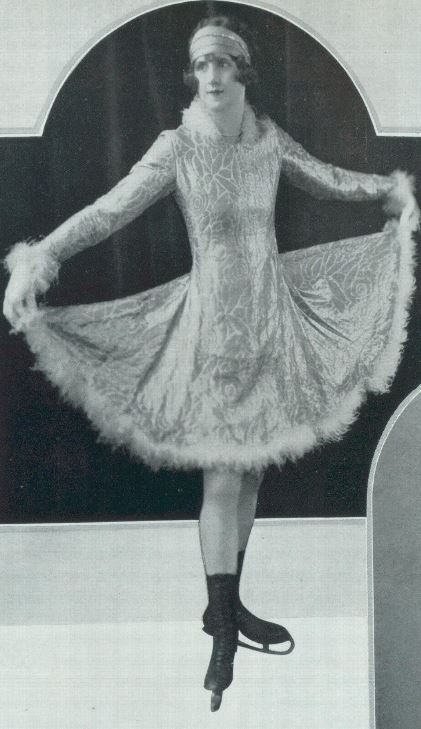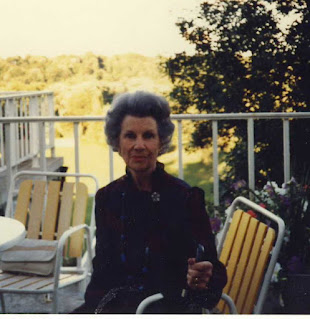Prior to World War I, the Prince's Skating Club at Knightsbridge in London, England as well as the International Skating Club of Davos in Switzerland offered members tests in waltzing on ice, but it wasn't until the thirties and forties that ice dance tests were widely introduced and standardized.
Great Britain inaugurated its first dance test, the NSA Third Class (Bronze) Dance Test, in November 1934. Daphne Wallis and Reginald Wilkie not only worked toward this milestone, but were the first to take the test and pass. After passing, Wilkie sat on the panel to judge the next candidates. In March 1936, the Second Class (Silver) Dance Test was added. Again, Wallis and Wilkie were the first to pass. In 1939, the First Class (Gold) Test was added to the schedule. The first to pass in this instance was Walter Gregory, whose newly invented Rhumba had been included in the test.
By 1940, the NSA's Gold Dance Test had turned into a marathon. Candidates had to perform the Argentine Tango, Rhumba, Paso Doble, Westminster Waltz, Quickstep, Viennese Waltz and Rocker Foxtrot to standards, then skate a one and a half minute 'exhibition dance' that was "marked for originality and arrangement [with] no spirals or breaks except for changing position". If couples received a minimum mark of 4.2 out of 6.0 from all three judges, they then had to perform a four-minute PAIRS program! If they received at least 3.5 for Contents and 4.2 for Manner Of Performance for their pairs program, they passed the Gold Dance test. If they failed even one component, they had to take the entire Gold Dance test again. To make matters even worse, the entire test was taken on the same day!
Under the direction of Harold Hartshorne, the USFSA adopted rules for its first ice dance test at its Annual Governing Council Meeting in April 1938. In order to take the test, skaters had to be USFSA members in good standing. Three judges marked each team on a scale of one to ten, with a passing mark of six. Dances were broken into two judging categories: Accurate Timing Of Steps To Music and Performance. In the book "The First Twenty-Five Years: USFSA 1921-1946", Hartshorne recalled, "Skaters were required to attain a certain standard in the Waltz, Tango, Foxtrot and Fourteenstep not only satisfy their curiosity as to their respective terpsichorean ability, but also to qualify for Sectional and National Competition. When the Bronze and Gold were instituted, the original test was called the Silver. I was aided in the preliminary work on the Gold Test by Joe Savage and Perry Rawson who helped me weed out four English and an Austrian dance for the consideration of the Dance Committee, whose members were not very familiar with any of them. Interest in these dances was, however, rapidly inspired by our Pair Champions, Joan Tozzer and Bernard Fox, who gave excellent renditions of the Rocker Foxtrot and Killian as then skated in England; also the Angolas who interpreted the Viennese; and the MacLennans of Australia who demonstrated the Blues."
The first USFSA tests were taken the summer that followed in Lake Placid during the club's Dance Week. By 1939, Silver and Bronze tests were added to the USFSA dance testing format. As of that year, the Bronze test consisted of the Continental Waltz and Fourteenstep, the Silver the Continental Waltz, Reverse Waltz, Three-Lobed-Eight Waltz, Fourteenstep, Foxtrot and Tango and the Gold the Blues, Killian, Viennese Waltz, Rocker Foxtrot and Three-Lobed-Eight Waltz. Among the first USFSA dance judges were Theresa Weld Blanchard, Joseph K. Savage and Eugene Turner.
In 1939, the Figure Skating Department of the Amateur Skating Association of Canada - precursor to the CFSA and Skate Canada - adopted the National Skating Association's third, second and first class dance tests. During the forties, the CFSA formalized its own three-tier dance test structure based on the NSA model, minus the 'exhibition dance' and pairs program. However, the dance tests were slow to catch on. At the 1946 Annual General Meeting of the CFSA, it was reported that only one hundred and fifty eight dance tests were taken... versus five hundred and sixteen figure tests. One of the main reasons for this was Canada's involvement in World War II, which meant there were fewer male partners around.
During the War, many countries that still had rinks open dabbled with their own variations of the NSA testing model. In 1950, the ISU Dance Committee met to try to standardize dance testing on an international level. A proposed dance three-tier model consisted of three Bronze dances (European Waltz, Fourteenstep and Foxtrot), four Silver dances (American Waltz, Blues, Killian, Tango) and five Gold dances (Argentine Tango, Paso Doble, Quickstep, Viennese Waltz and Westminster Waltz). The cost of taking these ISU tests was higher than that of USFSA, CFSA and NSA tests and as international judges were required, many of the first skaters to take the tests did so while attending European or World Championships.
Dance tests from the 1980 CFSA Rulebook
Much has obviously changed over the years, but today in most countries dance tests play an incredibly important part in figure skating programs from the ground up. If you haven't heard the Dutch Waltz music thousands of times... you haven't been to a test day!
Skate Guard is a blog dedicated to preserving the rich, colourful and fascinating history of figure skating. Over ten years, the blog has featured over a thousand free articles covering all aspects of the sport's history, as well as four compelling in-depth features. To read the latest articles, follow the blog on Facebook, Twitter, Pinterest and YouTube. If you enjoy Skate Guard, please show your support for this archive by ordering a copy of the figure skating reference books "The Almanac of Canadian Figure Skating", "Technical Merit: A History of Figure Skating Jumps" and "A Bibliography of Figure Skating": https://skateguard1.blogspot.com/p/buy-book.html.


















































